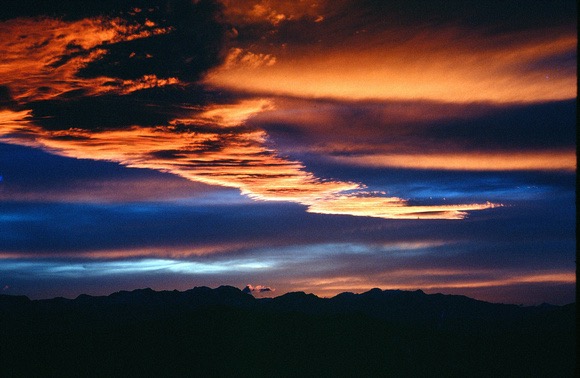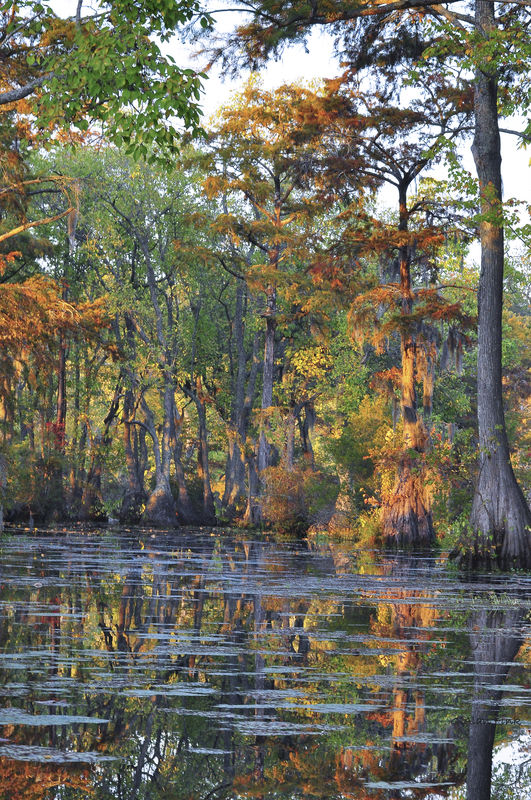No color film in 1973
Mar 15, 2017 12:26:56 #
machia
Loc: NJ
Color started in 1939 .
By the 70's I was blasting away with my Kodachrome 25 and 64 . Better color saturation than with any digital . Especially the ASA 25 .
Of course B&W was around too .
By the 70's I was blasting away with my Kodachrome 25 and 64 . Better color saturation than with any digital . Especially the ASA 25 .
Of course B&W was around too .
Mar 15, 2017 12:34:44 #
Low budget film. Color was a buck less expensive than color. Surprising they even used film in the camera. Wasn't it a Samuel Jackson movie?
Mar 15, 2017 12:47:36 #
Billynikon wrote:
You might have noticed in the picture that quite often she was taking pictures in low light. Most color films were 25 or 64 ASA. Tri X was 400 and could be pushed higher if needed.
In Spring, 1973, I exposed a couple hundred feet of High Speed Ektachrome, which was ASA 160. You could push the stuff to E.I. 320 (E.I. stands for Exposure Index, the proper way to refer to pushed or pulled film speeds). However, at 320, it didn't look so good. Metering was very twitchy... overexpose by 1/3 stop or more, and the highlights were clear. Underexpose by 1/3 stop or so, and the shadows were gone. Bracketing and using lots of film were both recommended.
I do have a few slides I took in 1974 at a Leon Russell concert in Charlotte, using High Speed Ektachrome at E.I. 320. However, they are a bit faded.
There was at least one 1000 speed slide film (3M?) that was so grainy, pros used it for special effects. I don't remember hearing about it until the late '70s or early '80s, though it may have been around sooner.
Mar 15, 2017 13:06:09 #
Actually you could have "googled that" and avoided all this but then, if everybody googled everything, this forum wouldn't have much purpose.
Okay, never mind. I started shooting in 1971,... color film was my medium and it was VERY advanced at that time. Shooting news I used film (Ectapress 800 wasn't out yet but came soon after and I moved to it exclusively because it could be pushed to 3200 easily and still meet press criteria,... there was none) but when I went out to shoot landscapes there was the infamous Kodachrome 64 ('color reversal' or slide film). It had virtually no margin of error, film having as much as 7 stops.
Now I'm babbling so I'll stop.
Okay, never mind. I started shooting in 1971,... color film was my medium and it was VERY advanced at that time. Shooting news I used film (Ectapress 800 wasn't out yet but came soon after and I moved to it exclusively because it could be pushed to 3200 easily and still meet press criteria,... there was none) but when I went out to shoot landscapes there was the infamous Kodachrome 64 ('color reversal' or slide film). It had virtually no margin of error, film having as much as 7 stops.
Now I'm babbling so I'll stop.
Mar 15, 2017 13:08:33 #
Simple answer: Black and white film was and still is significantly easier to develop while on an expedition. Less temperature critical than color film processing, which is a big deal when working out of a tent or on the side of a road. If I had plans to shoot and develop film on a camping trip, I'd certainly prefer to be working with black and white film, not color.
Mar 15, 2017 13:09:34 #
I was burning Kodachrome back then. The slides still look great.

Mar 15, 2017 13:12:02 #
Kiron Kid wrote:
I was burning Kodachrome back then. The slides still look great.
Sweet shot. Looks like 64, right? a warm medium.
Mar 15, 2017 13:13:56 #
MtnMan wrote:
Many of us with SLRs used color slide film.
We have thousands of slides waiting to be scanned someday.
We have thousands of slides waiting to be scanned someday.
I'm STILL scanning (when I get in the mood - time... I am patient to make a shot but not so much scanning) BTW, this one was Velvia 50.

Mar 15, 2017 13:17:42 #
A lot of major movies in the 50s, 60s, and even into the early 70s were B&W just because it was cheaper to buy, and process, and there were no color shift problems to deal with. Nothing like shooting a scene and a day or 2 later discovering that the scene needed a reshoot because of bad color.
Mar 15, 2017 13:26:15 #
GAlanFInk wrote:
Sweet shot. Looks like 64, right? a warm medium.
Actually, it was shot on Kodachrome 25. And it was an old roll that had been sitting in the glove box of my car for over a couple of years. But as you know, the Kodachrome films were very hardy. They could withstand all manner of abuse and still deliver superb slides. I very much disliked the Ektachromes from that time period. All of my color work was burned on K-Chrome 25 and 64.
Thanks
Mar 15, 2017 14:21:44 #
photoman022
Loc: Manchester CT USA
I haven't seen the movie, but most newspapers of the day wanted black and white photos because you could get better contrast for newpapers that printed in black and white and shades of gray. If the photographer worked for a newspaper, that would explain why he shot in black and white.
The scariest thing about the original question is that only old fogies know the answer!
The scariest thing about the original question is that only old fogies know the answer!
Mar 15, 2017 14:37:32 #
My first color images were on Kodachrome ASA (ISO) 10 in 1954. When I could get Ektachrome later in ASA 64 I was overjoyed!
Mar 15, 2017 15:01:43 #
Billynikon
Loc: Atlanta
The best thing in the movie was the Leica she was shooting with. Beautiful piece of work.
Mar 15, 2017 15:29:28 #
photoman022 wrote:
I haven't seen the movie, but most newspapers of the day wanted black and white photos because you could get better contrast for newpapers that printed in black and white and shades of gray. If the photographer worked for a newspaper, that would explain why he shot in black and white.
The scariest thing about the original question is that only old fogies know the answer!
The scariest thing about the original question is that only old fogies know the answer!
The process to convert a news photo from a camera, to the printed page was multi-stepped. The original negative was printed to a glossy photo, and then that photo was reproduced onto a copy negative. Then the copy negative was exposed to a chemically sensitized metal plate, creating a metal positive. That positive was then dipped in an acid bath to create a usable plate for eventual conversion to a cast rotary printing plate, along with the printed words.
There was also the rotogravure process, which is still used today, for color printing. That's another process altogether. It involved creating transparencies as large as 16x20, and creating color separation.
While I was going to college, I worked for the Courier Journal in Louisville, Ky., in the mid-1960's. Photographers were seriously converting from 4x5, to 35mm, and the compromise was creating a good print for conversion. 4x5 was preferred because of image and contrast loss between the original negative and the printing plate.
Mar 15, 2017 15:33:29 #
MtnMan wrote:
Many of us with SLRs used color slide film.
We have thousands of slides waiting to be scanned someday.
We have thousands of slides waiting to be scanned someday.
Thanks for the reminder! There goes my vacation.
If you want to reply, then register here. Registration is free and your account is created instantly, so you can post right away.





